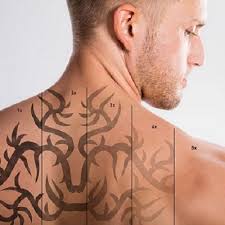In the world of website development, making sure your images look good and load fast is a big deal. For WordPress developers in Australia, getting a handle on image sizes is key.
This guide breaks down the basics, from the default settings to customization, and offers some easy tips for making your site shine.
How WordPress Handles Images (Default Sizes)
WordPress has its way of dealing with images right out of the box. It comes with default sizes to keep things looking good on different devices and themes.
Thumbnail Size (150 x 150 pixels)
For small previews or grids of images, WordPress starts with a thumbnail size of 150 x 150 pixels. It strikes a balance between looking good and loading fast.
Medium Size (Maximum 300 x 300 pixels)
When your images need to be a bit bigger, WordPress creates medium-sized ones with a maximum dimension of 300 x 300 pixels. This ensures your content looks sharp on various screens.
Large Size (Maximum 1024 x 1024 pixels)
If you’re dealing with larger images, WordPress generates ‘large’ size images with a max dimension of 1024 x 1024 pixels. It covers a range of screen sizes, especially for users with high-res displays.
Full Size (Original Image Dimensions)
The ‘full-size’ option keeps your image in its original form. But be careful, as using this for every image might slow down your site for users with slower internet.
Changing WordPress Default Image Sizes
Sometimes, the default sizes don’t quite fit the bill. Luckily, WordPress lets developers tweak these settings to match their designs. It’s an easy process in the ‘Settings’ menu under ‘Media.’ Input the dimensions you want for thumbnails, medium, and large images, and you’re good to go.
Best Image Sizes for WordPress
Different parts of your site need different-sized images. Here are some recommended sizes to keep things looking sharp:
Blog Post Image Size (1200 x 630 pixels)
For blog posts, aim for an image size of 1200 x 630 pixels. It looks good and loads fast, keeping your readers engaged.
Header Image Size (Banner Size 1048 x 250 pixels)
First impressions matter, especially with your site’s header. A banner size of 1048 x 250 pixels strikes the right balance.
Featured Image Size (Landscape 1200 x 900 pixels)
Featured images play a big role in many themes. For landscape images, go for 1200 x 900 pixels. It’s a size that lets your creativity shine without slowing things down.
Featured Image Size (Portrait 900 x 1200 pixels)
If your theme prefers portrait images, 900 x 1200 pixels is the way to go. It gives you flexibility without sacrificing user experience.
WordPress Background Image Size (1920 x 1080 pixels)
Your site’s background sets the tone. Keep it crisp with dimensions of 1920 x 1080 pixels, catering to different screen resolutions.
Logo Image Size (200 x 100 pixels)
A good logo is crucial. Keep it sharp and professional with dimensions of 200 x 100 pixels.
Thumbnail Image Size (150 x 150 pixels)
Thumbnails are the sneak peek of your content. Make them look good with a size of 150 x 150 pixels.
Choosing the Right Image Format
WordPress supports three main image formats: JPEG, PNG, and GIF. Each has its strengths:
- JPEG – For photos and colorful images.
- PNG – For logos and detailed graphics.
- GIF – For simple images and animations.
- WordPress Plugins for Images
To make life easier, some plugins handle image stuff for you:
Smush
It compresses and resizes images without losing quality. It even loads images only when a user sees them, making your site faster.
ShortPixel Image Optimiser
It handles various image formats and gives you options for compression. You decide how much quality you want.
Imagify
This is a user-friendly plugin that makes image optimization easy. Choose the compression level that fits your website.
WordPress Image Optimisation Tips
Here are some extra tips to make sure your images are working their best:
Lazy Loading
Let your images load when users see them. This makes your site faster, especially for users with slower internet.
Content Delivery Network
Spread your images across different servers globally. This makes your site faster for everyone, no matter where they are.
Image Compression
Find the right balance between image qualities and file size. Keep things looking good without slowing down your site.
Alt Text Optimisation
Describe your images with keywords. It helps with SEO and makes your site more accessible.
Regular Audits
Clean up your image library now and then. Get rid of stuff you don’t need to keep your site running.
Conclusion
Getting the hang of WordPress image sizes is a must for developers. For those in Australia, customizing these sizes, following some simple tips, and collaborating with WordPress development services will make your site appealing and fast. Your users will thank you for it!
Blogger & writer by passion.

















































































































































































